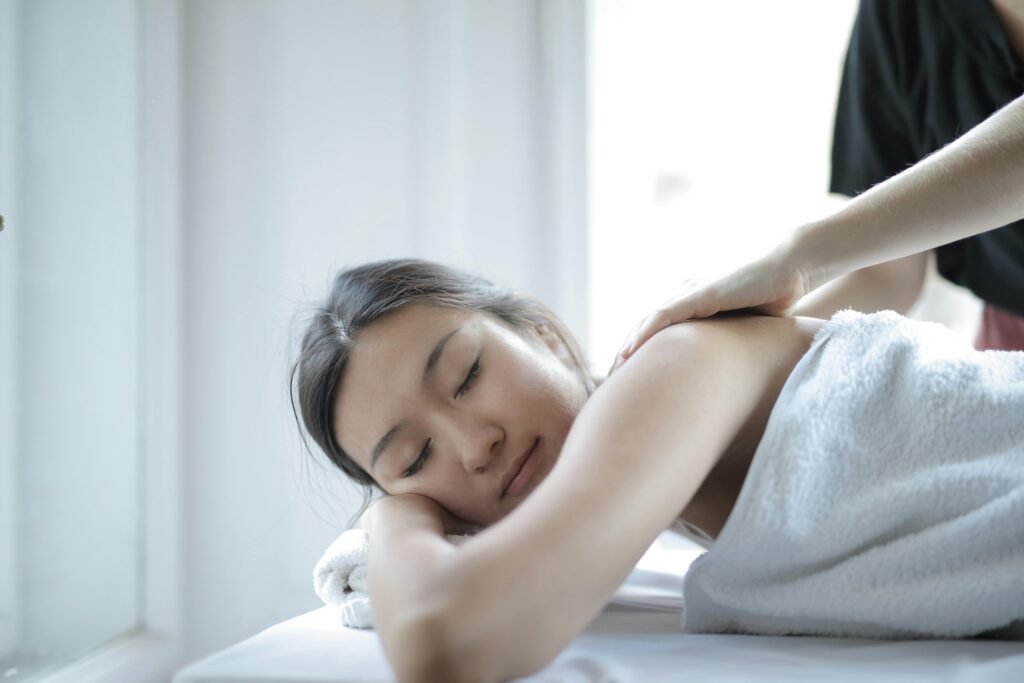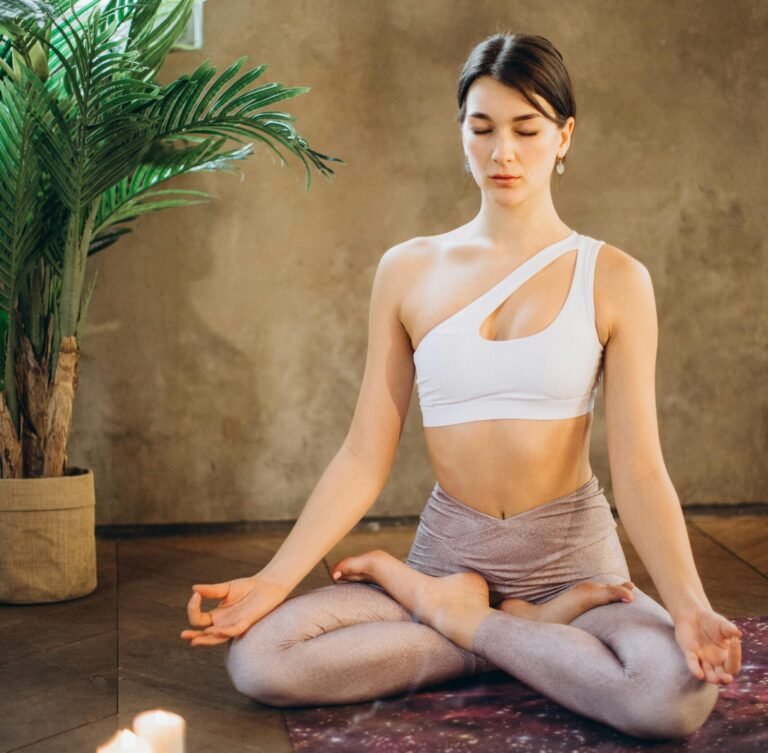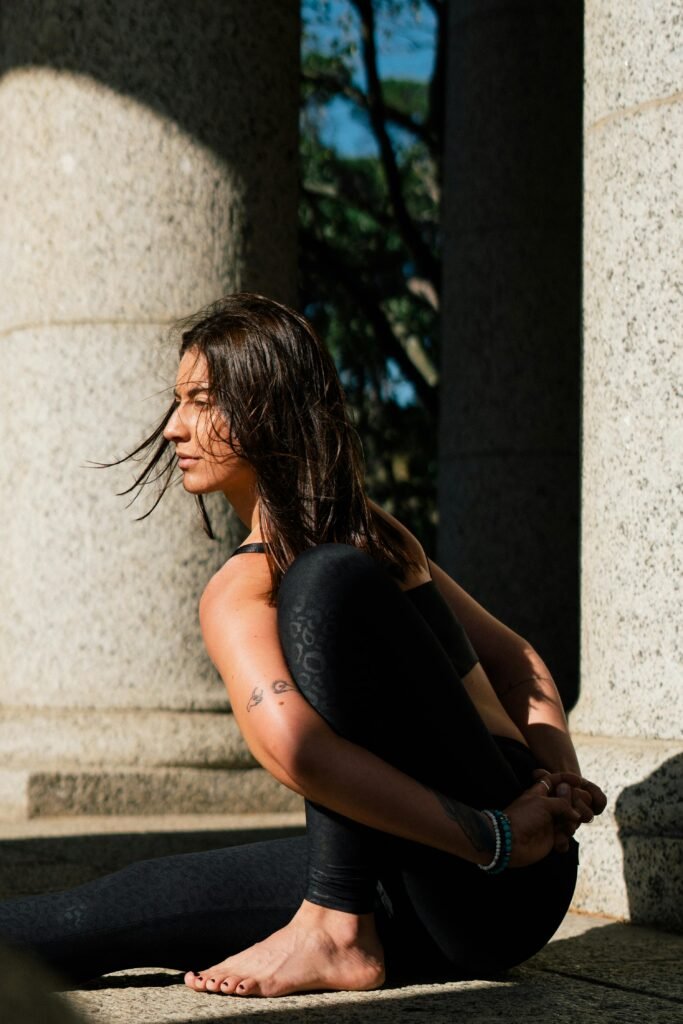Did you know that Thai yoga as another term, “Thai massage” or “Thai bodywork” is developed in ancient Thailand by Buddhist monks over 2,500 year ago?. Using Indian yoga’s teachings and Ayurveda medicine traditions, Thai yoga skin combines rhythmic squeezes, acupressure, and supported yoga positions to achieve overall wellbeing.
Principles of Thai Yoga
The three main ideas stressed in Thai yoga practice are metta (universal goodwill), mindfulness, and compassion.The body energy routes called “sen lines” are recognized as the healer’s area of expertise. Applying pressure facilitates the manipulation of soft tissues and muscles in this way, clearing congestion and assisting the body in regaining its normal energy flow.

Historical Roots Of Thai Yoga
Thai yoga, sometimes referred to as Thai yoga massage, has a long history that dates back more than 2,500 years. It is based on the healing traditions of India, China, and Thailand.
This distinctive method, which was initially taught by Shivago Komarpaj—who is thought to have been the personal physician of the Buddha—was influenced by Ayurvedic and Traditional Chinese medicine.
In order to balance the body, mind, and spirit, Thai Yoga Massage has developed over the years into a comprehensive therapeutic method that combines yoga poses, acupressure, and reflexology.
Thai Yoga Massage combines the best aspects of massage and yoga, resulting in a unique dance between the practitioner and the client. Thai yoga is done with the assistance of a therapist who guides your body into various yoga poses, as opposed to traditional yoga, where you do the poses alone. It’s been compared by some therapists to “yoga for two people.”
It is also different from traditional massages, which frequently entail the receiver being undressed and oils or lotions. Thai Yoga Massage takes place on a soft mat on the floor, in your complete clothes, creating a cozy and relaxed environment.
Thai yoga is unique in that it emphasizes the concept of “Metta,” or loving-kindness. This is the notion that love transcends our attachments and self-interest and is universal. It includes kindness, tenderness, and respect for all living things. This “loving-kindness” connection is established between the practitioner and their client by the use of their hands, feet, knees, and elbows. The Thai yoga therapist gently presses on the body, facilitating the release of any tension or obstructions.

The Technique & Practice of Thai Yoga Massage
Thai Yoga Massage, sometimes referred to as “Nuad Boran” or “ancient massage,” is a therapeutic approach based on Thailand’s long-standing traditional medical practices. In order to enhance physical, mental, and spiritual well-being, Thai Yoga Massage integrates aspects of yoga, acupressure, and energy work, in contrast to conventional Western massage treatments that mainly concentrate on muscle manipulation.
Elements of Thai Yoga Massage Practice
Thai yoga massages are usually given on a soft floor mat, and the receiver should dress comfortably and loosely. The practitioner performs a sequence of repetitive motions and passive stretches during the practice, frequently in a thoughtful and meditative manner.
Sen Lines: The Energetic Pathways
The idea of “Sen” lines, which are said to be channels via which life force, or “Prana,” travels throughout the body, is fundamental to Thai Yoga Massage. Sen lines represent distinct bodily systems and organs, much like the meridians do in traditional Chinese medicine. In order to clear obstructions and reestablish the energy’s natural flow, the practitioner exerts pressure along these channels, fostering harmony and balance.

Nuad Bo’Rarn: Traditional Techniques
The techniques used in Thai Yoga Massage are derived from ancient Thai healing practices and have been passed down through generations. Nuad Bo’Rarn, or “ancient massage,” encompasses a wide range of movements and stretches that target various parts of the body, including the limbs, back, neck, and shoulders.
Passive Yoga: Assisted Stretching
The emphasis on passive stretching in Thai Yoga Massage is one of its defining characteristics. The practitioner uses their hands, feet, elbows, and knees to apply pressure and promote mobility as they gently lead the client through a sequence of stretches that resemble yoga poses. These stretches encourage relaxation and relieve stress while enhancing range of motion, flexibility, and mobility.
Acupressure Points: Stimulating Vital Energy
Thai Yoga Massage uses acupressure techniques to stimulate certain spots along the Sen lines in addition to stretching. The practitioner can ease muscle tension, enhance circulation, and encourage the body’s innate healing process by applying pressure to these areas. The patient receives a very healing and revitalizing experience from the stretching and acupressure combined.
The Role of the Practitioner
The ability and intuition of the practitioner are essential to Thai Yoga Massage. A skilled practitioner develops traits of present, mindfulness, and compassion in addition to having technical proficiency in executing the various practices. By transferring warmth, energy, and compassion to the receiver, the practitioner’s hands take on the role of healing instruments.
Read more about yoga Practices

Benefits of Thai Yoga
Thai yoga is good for your health, both in the mind and the body. The holistic approach is used by the Thai yoga discipline to take care of your body and mind. The body’s inclination toward stress and relaxation is largely dependent on changes in circulation and flexibility.
Pressure points are stimulated by Thai yoga massage, which opens the body’s energy channels and promotes healing. This form of massage is more vigorous and incorporates various yoga poses to facilitate a more profound stretch. While this technique is not the same as a traditional massage, it nonetheless offers numerous health benefits. Not sure if you should get a massage like this? The following ten advantages of a Thai yoga massage are:
- Enhanced Flexibility: Thai yoga incorporates gentle stretching and assisted postures to improve flexibility and range of motion.
- Stress Relief: Experience deep relaxation and release tension as the rhythmic compressions of Thai yoga soothe your body and mind.
- Improved Circulation: Stimulate blood flow and lymphatic drainage, promoting better circulation throughout the body.
- Pain Reduction: Alleviate muscular tension and discomfort through targeted acupressure techniques, offering natural pain relief.
- Enhanced Mindfulness: Cultivate present-moment awareness and mindfulness as you synchronize breath with movement during Thai yoga practice.
- Balanced Energy: Restore balance to the body’s energy pathways (sen lines), promoting harmony and vitality.
- Better Posture: Correct imbalances and improve posture by aligning the spine and releasing tension in muscles and joints.
- Emotional Well-being: Experience a sense of emotional release and tranquility as Thai yoga promotes relaxation and stress reduction.
- Increased Body Awareness: Deepen your connection to your body and its sensations through mindful movement and breathwork.
- Holistic Healing: Benefit from a holistic approach to wellness that addresses the physical, emotional, and spiritual aspects of health and well-being.

Getting Started with Thai Yoga
Preparing for Your Thai Yoga Session
Basic Thai Yoga Poses
When it comes to Thai yoga, mastering the basics is the first step in an exercise that changes your life. Now let’s practice some fundamental postures that serve as the basis for many other yoga poses.
Child’s Pose (Balasana):

Pose Overview:
- Kneel on floor, knees wide enough.
• Gradually bend chest between thighs.
• Hold pose while focusing on artificial respiration and calm sensation.
Seated Forward Bend (Paschimottanasana):

• Sit on floor with legs off the ground.
• Inhale and extend spine.
• Exhale loudly and forward from hips.
• Reach for toes.
• Stretch for several breaths.
• Feel slight stretching in hamstrings and lower back.

Where to Find a Thai Yoga Massage Class or Therapist
Thai yoga massage is a well-liked technique among practitioners, providing a special and efficient means of unwinding and revitalizing oneself. It is frequently provided in wellness centers and yoga studios, where classes are taught by qualified teachers. Thai Yoga Massage instruction is frequently included in the curricula of massage therapy schools, providing student clinics and guided practice sessions. Information on local holistic health and wellness events, workshops, and classes can be found on websites such as Meetup, Eventbrite, and Mindbody. Certifications are also provided by professional groups and directories, such as the International Thai Therapists Association (ITTA) and the Thai Healing Alliance International (THAI). Recommendations and referrals from loved ones, neighbors, and local wellness groups may also be helpful.
Conclusion
Thai Yoga Massage offers a wonderfully balanced approach to physical and mental well-being in a society that is becoming more and more aware of the value of practicing holistic wellbeing.
This practice is truly nourishing to the body, mind, and soul because of its rich history, its special synthesis of yoga and bodywork therapy, and its many health advantages.
Locating the best Thai Yoga Massage class or qualified therapist might be a first step in becoming a more balanced, healthier version of yourself. It could be the life-changing encounter you’ve been searching for on your path to wellness.
FAQ
Most frequent questions and answers
Thai yoga is an integrative practice that comprises yoga poses, Ayurveda elements, and passive stretching. On the other hand, traditional yoga concentrates more on controlling breath, boosting concentration, and mastering asanas, through the joint work of the body, mind, and spirit.
Yes, Thai yoga that is suitable for people of every disposition and physical constitution can also be modified to be an attribute. Instructors usually ask starters to start with little speed and work with a certified instructor to help maintain the technique and alignment.
Absolutely! Thai yoga has been proved to release tensions in muscles, to serve as pain killer, and to improve the quality of joint actuation with the help of gentle stretching and acupressure.
The frequency of practice remains varied based on the personal attributes and aspirations. Some individuals cherish having a session once a week, while others can practice Thai yoga every day in order to promote their everyday well-being.
Thai yoga, however, is a safe form of yoga for the most part. It is appropriate except for people with some medical conditions or injuries who must consult a doctor before joining a class.
Wearing roomy, breathable clothing that doesn’t hinder your movements is highly recommended. Avoid wearing jewels and accessories that can hinder the performance while practicing








Average Rating